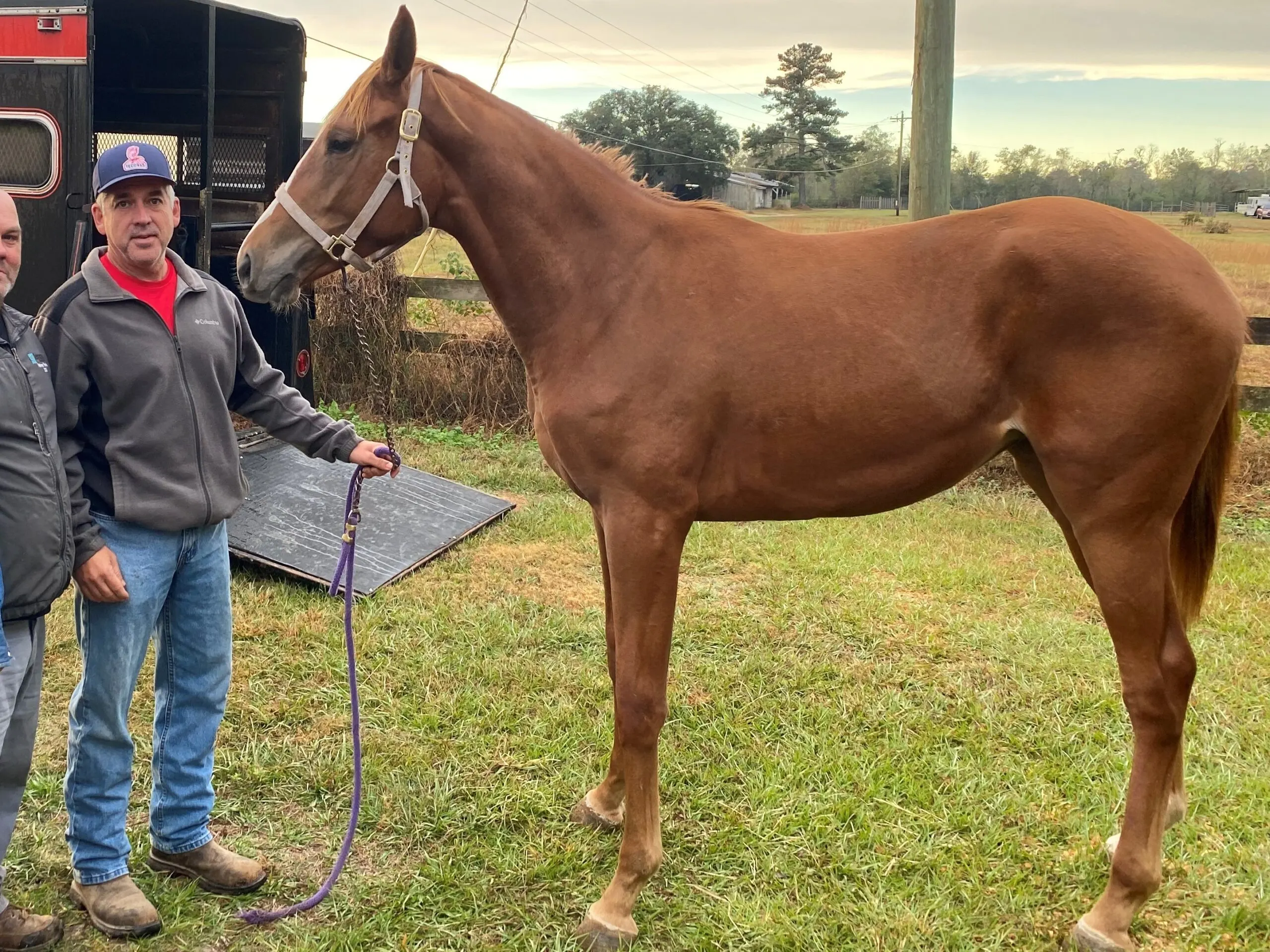Last updated: August 29, 2023
In the vast world of equines, horses have been classified, bred, and celebrated for their varied talents, attributes, and histories. From the swift-footed Thoroughbreds that dominate racetracks to the powerful draft horses known for their strength, there’s a horse for almost every human need and desire. And amidst this spectrum lies a particularly interesting category – the warmblood horses.
A warmblood horse boasts a pedigree that blends the characteristics of both cold and hot-blooded breeds. Born from the union of robust draft horses and nimble riding horses such as Arabians and Thoroughbreds, these horses stand out for their intelligence, serene temperament, and exceptional athleticism.
Beyond their rich lineage lies a tale of meticulous breeding and unparalleled equestrian legacy. Dive deeper with us into the warmbloods’ captivating history, their esteemed place in competitive arenas, and why they’ve become the heartthrobs of horse aficionados worldwide. Discovering their story is an equestrian adventure in itself.

Historical Background of Warmblood Horses
The story of warmblood horses is as intriguing as the animals themselves. Journey back in time to Europe, where the tale begins. In lands known for their rich equestrian culture, the dream was to cultivate a horse that married the strength of draft horses with the agility of riding breeds.
The aim? A horse that could pull a plow yet dance gracefully in competitive arenas. To achieve this, breeders embarked on a meticulous journey of selective breeding. They paired the hefty and enduring draft horses with spirited and agile breeds like the Arabian and Thoroughbred.
The outcome wasn’t immediate, but with patience and dedication, they began to see results. Over generations, the offspring showcased a harmonious blend of their ancestors’ best traits, giving birth to what we now recognize as the warmblood.
This deliberate and thoughtful breeding process laid the foundation for a lineage of horses celebrated for their versatility. From working the fields of Europe to shining in international equestrian competitions, warmbloods are a testament to human vision and the marvel of selective breeding.
Definition of a Warmblood Horse
At the heart of understanding warmblood horses is grasping the essence of the term “warmblood.” It might sound like something straight out of a fantasy novel, but in the equestrian world, it’s a term of distinction reflecting a horse’s lineage and temperament.
Now, let’s demystify this a bit. In the realm of equines, horses are broadly categorized based on their temperament and original purpose. On one end, you have the “hot-blooded” horses, like Thoroughbreds, known for their fiery spirit, speed, and sensitivity.
These are the ones you often see darting down racetracks, their every muscle exuding power and agility. On the opposite spectrum lie the “cold-blooded” large equines, such as draft horses. These gentle giants are characterized by their calm demeanor, strength, and endurance.
Historically, they were the reliable workhorses, pulling heavy loads and tirelessly tilling the fields. Enter the warmbloods, the middle ground. They are the product of strategic breeding between the hot-blooded and cold-blooded horses.
The result? A horse that embodies the best of both worlds—combining the spirited energy of a Thoroughbred with the composed strength of a draft horse. This balanced temperament and versatility make warmbloods a favorite in various equestrian disciplines and endeared them to horse lovers across the globe.
Etymology of the European warmblood
“In Germany, the various horse breeds are categorized by the phrases Vollblut, which involves English Thoroughbreds and Arabs; Kaltblut, which means all draught horse races. The term “Warmblood” has been adapted from the German word “Warmblut.
Characteristics of Warmblood Horses
Warmblood horses, renowned for their balanced blend of strength and agility, hold a unique position in the equine world. Let’s look at the defining characteristics that set these versatile athletes apart.
Physical Characteristics
One glance at a warmblood, and you’ll immediately sense something special. Standing with a presence that effortlessly marries grace with power, these horses carry a distinct physicality that sets them apart.
Starting with their size, warmbloods are notably substantial, typically standing between 15.2 to 17.3 hands high. However, they’re not just about height; they possess a robust yet elegant build reminiscent of their diverse lineage.
Their bodies are muscular, with strong, arched necks and broad chests, hinting at their draft horse heritage. Yet, their limbs, while sturdy, are also long and refined, a nod to their riding horse ancestors.
As for their coat, warmbloods showcase a beautiful array of colors, though bay, chestnut, gray, and black are particularly common. Their coats often gleam with a healthy sheen, making them a sight to behold, especially under the sun.
But it’s not just their aesthetic appeal that’s worth noting. The athletic build of warmbloods is intrinsically tied to their versatility. Their powerful hindquarters provide them with impressive propulsion, perfect for activities like jumping.
At the same time, their balanced conformation ensures they move with grace and fluidity, making them equally suited for dressage. In essence, the physical characteristics of warmbloods are a testament to their rich history and purposeful breeding. Every inch of them speaks of an athlete ready to shine in whatever discipline they’re tasked with.
Temperament and Behavior
The allure of warmblood horses extends far beyond their stunning physique. Delve deeper, and you’ll find their temperament and behavior to be just as captivating.
Warmbloods are often celebrated for their even-keeled disposition. Unlike the sometimes fiery nature of hot-blooded breeds or the gentle placidity of cold-blooded ones, warmbloods strike a harmonious balance. They exude a calm confidence, often showcasing a thoughtful, patient demeanor, yet beneath that lies a responsive and eager spirit.
To understand this balance, let’s juxtapose them with their counterparts. Hot-blooded horses, such as Thoroughbreds and Arabians, are renowned for their sensitivity and spiritedness. Their fast reactions and lively nature make them perfect for high-speed events, but they might be a tad overwhelming for inexperienced riders.
On the flip side, cold-blooded horses, those gentle giants like Clydesdales or Shires, tend to be the epitome of calmness. Their historically labor-intensive roles required a placid nature. They are dependable but might sometimes lack the responsiveness sought in more dynamic equestrian disciplines.
Warmbloods? They sit comfortably in the middle. Their responsiveness doesn’t come with the unpredictability sometimes seen in hot-bloods. Likewise, their calmness doesn’t translate to sluggishness. It’s this unique blend of traits – alert yet composed, spirited but not skittish – that makes them so desirable.
Whether you’re navigating a complex dressage routine, taking on jumping courses, or simply enjoying a peaceful trail ride, a warmblood’s temperament ensures a bond built on trust and mutual respect.
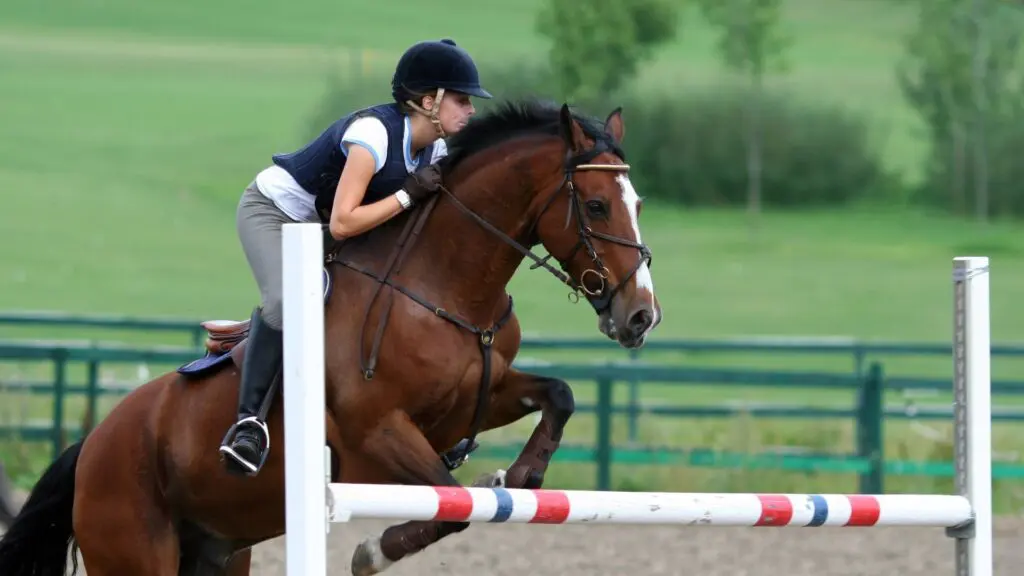
The Various Breeds of Warmblood Horses
If you look at the sporting horses around the world, you’ll notice some trends regarding warmbloods. A few dominant foundation breeds and several others frequently used to produce them are variations of these base breeds.
The base breeds are Hanoverians, Holsteiners, Selle Français, and Trakehner (in chronological order). Furthermore, the so-called refining race breeds, English Thoroughbreds and Arabs, have a heavy influence.
Dutch Warmblood, American Warmblood, and Irish Draft comprise some examples of crossbreeding hybrids to produce athletic warmbloods but are not restricted to the Warmblood breeds.
Hanoverians
In 1735 at the Landestuet stables in Germany, the Hanoverian breed was established. These horses were bred to be stout workhorses used to pull carts, for farming, and for the military.
Machines eventually took over the duties the original Hanoverians were bred to perform, so breeders adapted to the times and began crossing their Hanoverians with lighter horses.
The inclusion of the hot blood horses created a faster, more refined animal with strength and stamina. As a result, today’s Hanoverians are versatile horses with a big frame and exceptional athletic ability, a calm disposition, and a comfortable gait.
With the rising use of artificial insemination, researchers also see a more significant genetic variability of global factors in the Hanoverian breed. The success of selectively crossbreeding has produced a modern Hanoverian that competes at the highest equestrian sports levels but is calm enough to be a family riding horse.
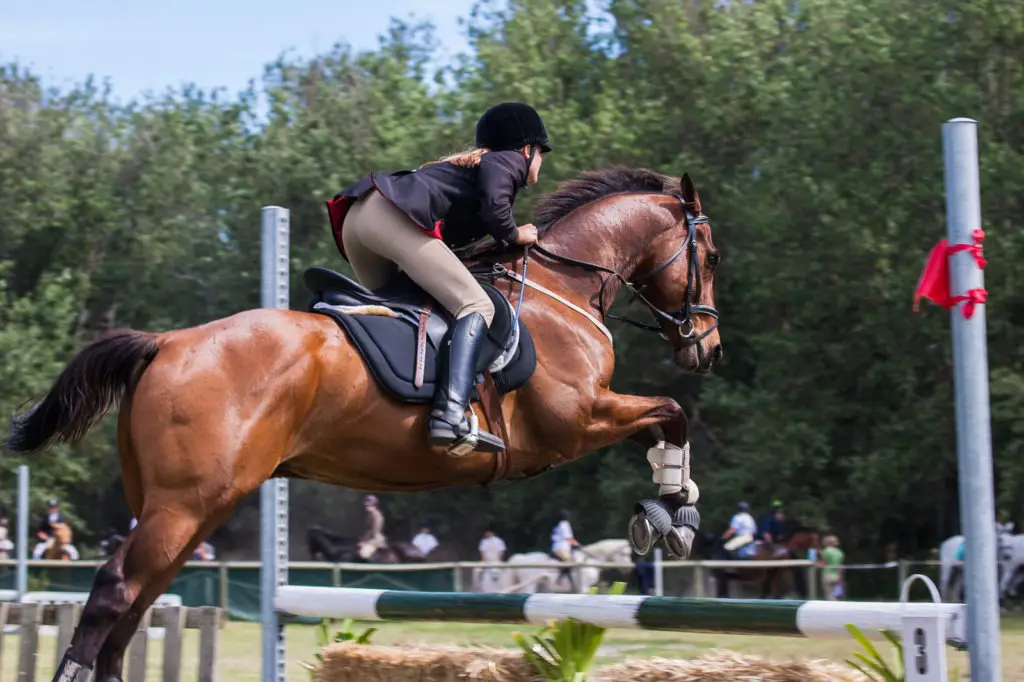
In several other breeding grounds, the Hanoverian influenced sports horse reproduction to no small degree and grew into the modern sports horse model in the 1960s.
Holsteiner
The Holsteiner breed claims to be the first warmblood breed. They began in Northern Germany over 700 years ago by monks. These monks selectively bred the small native horses to increase their size and strength.
The result was a robust thick horse suitable for carrying a heavy load and working the land. In addition, their breeding program produced the perfect steed to carry a knight laden with armor.
However, as time passed, quick-striking cavalries became more popular, so as warfare changed, so did the Holsteiner breed; they evolved into lighter, faster horses with great strength.
Modern Holsteiners are bred precisely toward leaping. As a result, the Holsteiner is one of the world’s top showjumping breeds today, and with its use of international blood, Holsteiner breeders are very picky.
Trakehner
The Trakehner horse is credited with being one of the earliest warmblood breeds. They developed in the 18th century because of the need for a cavalry mount that was faster and lighter than the traditional heavy and big-boned horses of the times.
The horses, though, not only needed to be fast, but they had to be strong enough to carry knights wearing heavy armor or pull a plow if required. Thus the Trakehner warmblood was created to meet these needs.
Before the start of World War II, the Trakehner was perhaps Germany’s primary horse-riding breed. It was a very common army horse and was effectively used at horse shows to dominate equestrian events in the early days by military officers.
Because this was more efficient to be used in the army, the way of travel was flatter. The Trakehners lost their base during World War II when their native nation went to Russia and Poland.
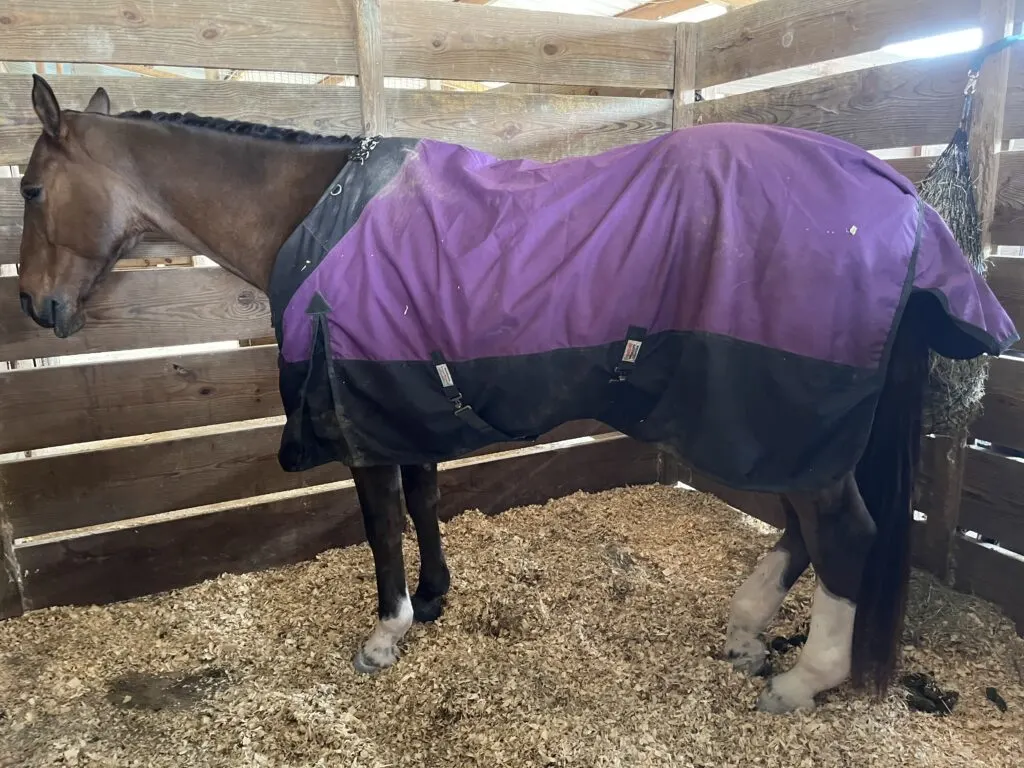
Warmbloods in Equestrian Sports
Warmbloods have long been the stars of the equestrian arena, a testament not only to their impeccable breeding but also to their versatility and athleticism. These horses have made their mark in a myriad of disciplines, with dressage, show jumping, and eventing being their most notable arenas.
Dressage: Often referred to as the “ballet of equestrian sports,” dressage requires precision, elegance, and a deep connection between horse and rider. Warmbloods, with their graceful movements and keen responsiveness, are naturals. Their rhythmic gaits and the ease with which they execute complex maneuvers make them favorites in dressage rings worldwide.
Show Jumping: The explosive power and agility of warmbloods come to the fore in show jumping. Their strong hindquarters and balanced build enable them to clear tall obstacles with finesse. It’s no surprise that many of the world’s top showjumping champions are warmbloods, effortlessly sailing over daunting courses with both strength and style.
Eventing: A true test of versatility, eventing combines dressage, cross-country, and show jumping. Warmbloods thrive here, their adaptable nature making them equally proficient whether they’re showcasing controlled movements in dressage, galloping through rugged terrains in cross-country, or leaping over jumps.
In the annals of equestrian sports history, numerous warmbloods have etched their names. Horses like Totilas, a Dutch Warmblood, have dazzled in dressage with world-record scores. In show jumping, legends like Hickstead, a Belgian Warmblood, have leaped into our hearts with their breathtaking performances. These names, among many others, stand as a testament to the warmblood’s prowess in the competitive arena.
It’s clear that when it comes to equestrian sports, warmbloods aren’t just participants; they’re often the headlining acts, showcasing the perfect blend of athleticism and artistry.
Breeding and Registration
The lineage of a warmblood horse isn’t just a matter of pride; it’s a testament to meticulous breeding practices that have been honed over centuries. Central to these practices is the belief that the right breeding brings forth not just physical attributes, but also the temperament and aptitude essential for excellence in equestrian sports.
Warmblood Breeding Practices:
Warmbloods are not bred for a specific look but rather for their abilities, primarily in equestrian disciplines. Breeders aim for horses with sound conformation, athletic capability, and a balanced temperament. To achieve this, breeders often crossbreed different warmblood lines or introduce Thoroughbreds, Arabians, or other breeds to infuse specific traits.
The Significance of Studbooks:
Studbooks play a pivotal role in preserving the integrity and quality of warmblood breeds. These records meticulously document a horse’s lineage, ensuring that the breeding remains true to the desired characteristics of the breed. A horse’s pedigree, traced through studbooks, provides invaluable information about its potential abilities, health, and temperament.
Inspections and Approvals:
Warmbloods undergo a rigorous inspection process to ensure they meet the high standards set by breeding associations. Typically, as yearlings or during their early adult years, these horses are assessed on various criteria, from conformation and movement to jumping ability and temperament.
Only those that pass these stringent evaluations are approved for breeding, ensuring that only the best traits are passed on to the next generation.
In essence, the breeding and registration processes underline the commitment of the equestrian community to uphold the esteemed legacy of the warmblood horse. Through diligent practices and a keen understanding of genetics, the warmblood’s stature as a premier athletic horse is continually reinforced.
Why are Warmbloods Preferred in Certain Equestrian Sports?
Warmbloods have carved a niche in disciplines that demand both strength and agility. Their naturally balanced temperament ensures they respond well to training, making them reliable partners in high-pressure situations.
In conclusion, while each horse type has its unique strengths and specialties, warmbloods, due to their lineage and breeding, enjoy a versatility that makes them stand out in the equestrian world.
Demand for Warmblood Breeds is Increasing.
There has been a steady rise in equestrian activities over the last 50 years. Because of the warmblood’s dominance in equestrian events and increased activities, warmbloods are in high demand. They have also gained popularity because of their exposure during Olympics competitions.
New breeding projects were introduced, and all were using the same formula: a mixture of the four Warmblood traits foundations as mentioned, mixed with the dominance of Thoroughbred. At the same time, the Arabs have shed certain ground.
The foundation horse breeds used for local forms of strong warm blood often came from the Oldenburg in the Netherlands. Others started with a Thoroughbred mare base, like those bred in Australia and New Zealand.
There is also no question that certain species of Warmblood are closely connected. Still, it should not be denied that there are base breeds with distinct genes, variations in livestock, different breeding philosophies, and mating practices.
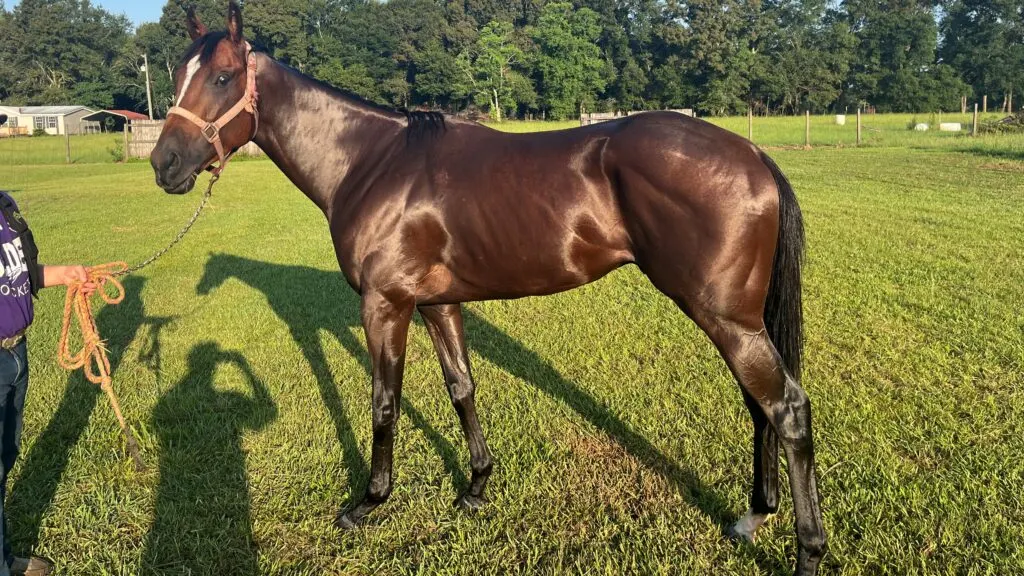
Warmbloods vs. Other Horse Types
In the world of equines, while every breed holds its own unique charm and utility, warmbloods possess attributes that make them distinct when compared to other horse types. Here’s a closer look at these differences in terms of physique, performance, and purpose.
Physique:
- Warmbloods: As we’ve touched upon earlier, warmbloods beautifully bridge the gap between robust draft horses and agile riding breeds. They inherit the strength and stature from drafts and the refined, athletic build from riding horses. Typically standing between 15.2 to 17.3 hands high, their conformation is balanced, making them both powerful and graceful.
- Other Horse Types: Thoroughbreds, for instance, are leaner and built for speed, with a more streamlined appearance. Draft horses, like the Clydesdale, are much bulkier and stout, bred for heavy labor and endurance.
Performance:
- Warmbloods: Their middle-ground physique means they can be both strong and agile, making them adept at a variety of disciplines, from dressage to jumping.
- Other Horse Types: Hot-bloods like the Arabian are exceptionally spirited and quick, often preferred for endurance races and sports demanding high energy. In contrast, draft breeds prioritize strength over speed, making them better suited for work than competitive sport.
Purpose:
- Warmbloods: Initially bred to be multi-purpose horses, they’ve evolved to be exceptional in equestrian sports due to their balanced attributes. Their calm temperament, combined with their athletic build, makes them ideal for both competitive and recreational riding.
- Other Horse Types: While Thoroughbreds dominate the racetrack, draft horses have historically been indispensable in agriculture, pulling heavy loads and plowing fields.
Conclusion
Warmblood horses, with their distinctive blend of power, grace, and versatility, undoubtedly stand out in the vast equine tapestry. From their rich historical lineage to their unparalleled prowess in equestrian sports, these horses exemplify the perfect marriage of form and function.
As we’ve journeyed through their attributes, it becomes evident why they’re so revered in the equestrian community. Whether you’re an avid horse enthusiast or just beginning to explore the world of equines, taking a closer look at warmbloods promises a deeper appreciation of their exceptional contribution to the equestrian realm. Embrace the allure of warmbloods and let their captivating story enrich your equine experience.
Check out the YouTube video below, it provides additional information you may find helpful about warmblood horses.
FAQ
What is the difference between a warmblood horse and a thoroughbred?
Thoroughbreds are a distinct breed, while warmblood horse breeds result from crossbreeding to produce calm yet athletic animals. This makes them better suited for activities such as dressage which requires intense concentration.
Meet Miles Henry
An avid equestrian and seasoned racehorse owner, Miles Henry brings his extensive experience to the equine world, proudly associating with the AQHA, The Jockey Club, and various other equine organizations. Beyond the racetrack, Miles is an accomplished author, having published various books about horses, and is a recognized authority in the field, with his work cited in multiple publications.
🔗 Connect with Miles:
Twitter
Facebook
YouTube: Check out race highlights, horse care tips, and more!

